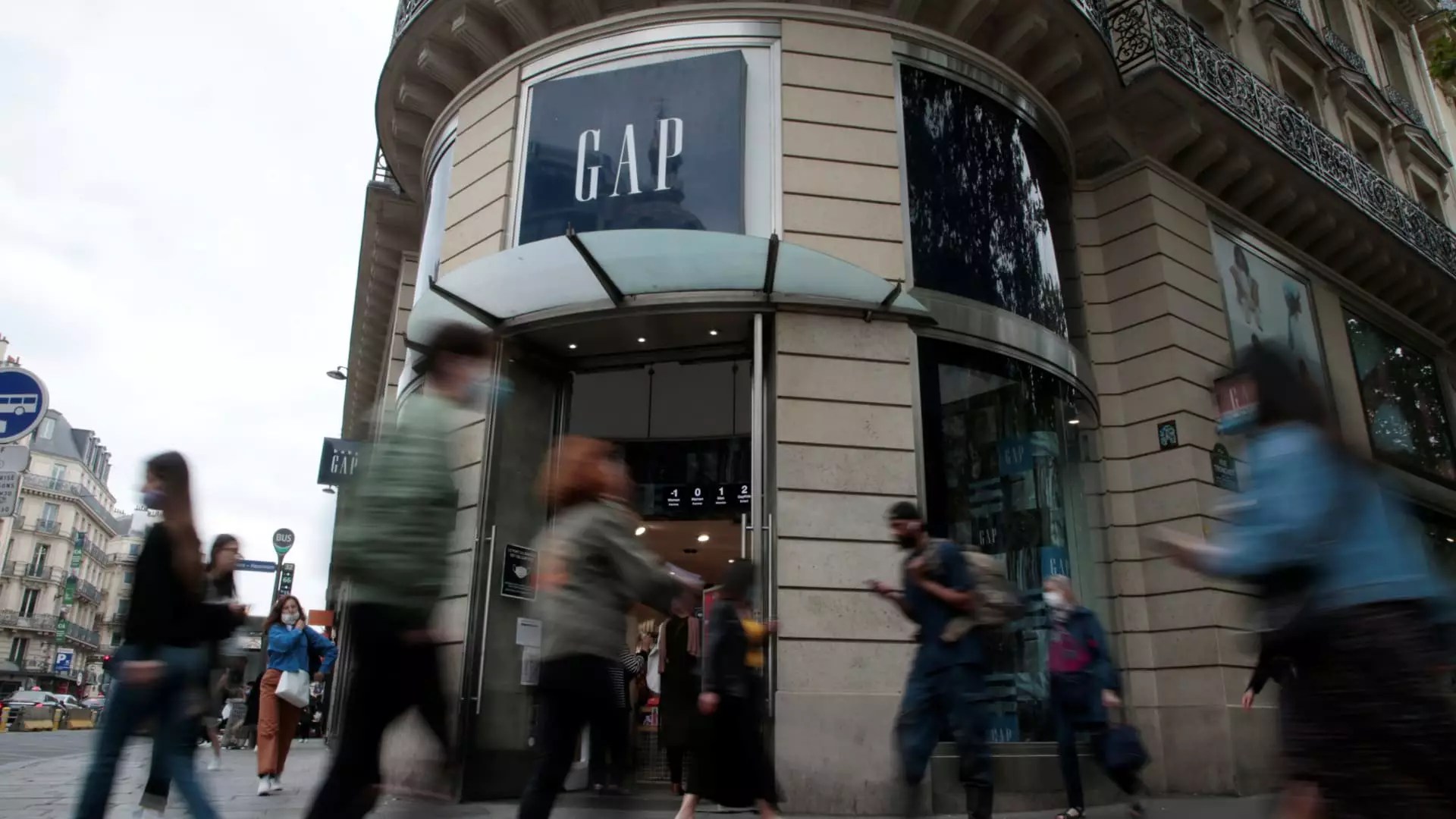In the midst of considerable economic policy shifts, Gap Inc. stands at a crossroads where tariffs are not just bureaucratic footnotes but significant threats to its financial health. As the company announced its fiscal first-quarter earnings, it revealed the harsh reality of impending tariffs on imports. As detailed, the company faces potential losses in the range of $250 million to $300 million due to a new 30% duty on Chinese goods and a 10% levy on imports from several other nations. This staggering figure reveals just how vulnerable even a retail giant like Gap can be in the face of fluctuating trade policies.
The Reality of Tariffs: A New Normal?
The imminent tariffs are not just numbers on a ledger; they symbolize a broader, tumultuous landscape for American retailers who have relied on global supply chains. Although Gap’s leadership indicates a plan to mitigate these costs by diversifying sourcing to countries like Vietnam and Indonesia, one must question whether this approach is adequate in the long term. The original optimism expressed by CEO Richard Dickson about escaping significant price increases through strategic maneuvering may now sound overly optimistic. When businesses face enormous external pressures, their resilience (and their claims of invulnerability) are tested beyond their limits.
There’s also the fact that Gap, which previously relied on China for less than 10% of their production, now anticipates it will drop to an even lower percentage. This swift adaptation raises questions about the effectiveness of past supply chain strategies. However, moving sourcing to places like Vietnam introduces new uncertainties, especially with discussions around a potential 46% reciprocal tariff. This chaotic environment serves as a reminder that domestic and international political corridors can profoundly impact a company’s trajectory, often in unpredictable ways.
Temporary Gains Mask Deeper Issues
While Gap has delivered fiscal first-quarter results that slightly beat expectations—earnings per share of 51 cents compared to the 45 cents anticipated and revenue growth to $3.46 billion—this doesn’t conceal the underlying issues sowed by tariffs and market headwinds. The incremental sales growth of about 2% from the previous year does bring a semblance of stability, but in reality, it mirrors a company on a tightrope—thriving momentarily yet at risk of falling at any point.
The company’s guidance for the upcoming fiscal year speaks volumes about management’s caution. A forecasted growth of only 1% to 2% contrasts with analysts’ more robust expectations of 1.3%. Such tempered projections indicate that even with some quarters of growth, the company is preparing for broader socioeconomic factors that don’t favor it. If it anticipates flat sales for the current quarter while Wall Street had been aiming for a modest growth of 0.2%, we are witnessing a disparity that is difficult to ignore.
Brand Resilience in a Challenging Market
Despite the gloomy picture presented by taxing policies, some areas within Gap’s portfolio are showing promising signs of resilience. Old Navy remains the star of the show with a notable 3% sales growth, even exceeding expectations. Such performance suggests that not all is bleak in Gap’s ecosystem. Dickson’s focus on strengthening brand identity and outreach appears to be working. The namesake Gap brand is also seeing upward trends, but Banana Republic and Athleta are struggling to keep pace.
These discrepancies raise questions about the long-term brand strategy. If Gap is investing heavily in reviving its namesake brand but struggles with established ones like Banana Republic, the company must reassess how it positions these brands in the marketplace. The contrast between Old Navy’s success and Banana Republic’s 3% decline clearly showcases a talent for market adaptation, but it also underscores a lack of cohesive strategy. The brand’s current identities are often mismatched with consumer expectations, revealing deeper problems that could haunt Gap in a rapidly evolving retail environment.
The unpredictable landscape instigated by tariffs and trade policies calls for a more profound long-term vision that speaks not only to immediate recovery but sustainable growth amidst volatility. There’s a growing need for the company to adopt strategies that require agility, foresight, and a profound understanding of evolving consumer sentiments, rather than merely fighting fires as they arise.
Gap’s foresight may well hold the keys to its survival and growth; however, it is increasingly evident that the tide of tariffs exposes the fissures in a historically robust business model. As it wrestles with the financial implications of a shifting international economy, the question remains: can Gap turn these challenges into opportunities, or will it falter under the weight of unavoidable market realities?


Leave a Reply